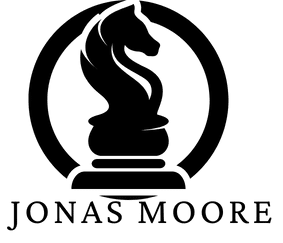How to Effectively Manage Seasonal Demand Fluctuations in the UK Tourism Industry?

In the dynamic world of tourism, seasons dictate the rhythm. From the peak tourist seasons of summer and winter to the more tranquil shoulder and low seasons, these cyclical variations significantly influence the operations of many businesses in the industry. Particularly for hotels, mastering the art of managing seasonal demand fluctuations is crucial for maintaining a steady cash flow and achieving business goals.
In this article, we are going to dissect the strategies that can help hotel operators and others in the UK tourism sector manage these seasonal fluctuations effectively. Our focus is on understanding the nature of seasonal demand, leveraging sales and inventory management, and employing revenue management techniques.
A découvrir également : How Can UK Mental Health NGOs Use Social Media to Raise Awareness and Reduce Stigma?
Understanding Seasonal Demand Patterns
Developing a comprehensive understanding of seasonal demand patterns is the first step in managing cyclical fluctuations effectively. You need to understand why demand rises and falls during different periods of the year.
The UK is a destination that attracts millions of tourists each year. Whether it's the summer months when families are on holiday or the winter period when Christmas markets and festive celebrations entice visitors, there are peak seasons when demand for hotel rooms and other tourism services surge. Conversely, there are low seasons, typically in the spring and autumn, when demand drops.
En parallèle : What Strategies Can UK-Based Charities Use to Enhance Donor Retention?
Understanding these patterns will help you anticipate and prepare for the needs of your customers. For instance, knowing that winter is a peak season for your hotel, you can take steps to ensure your inventory of rooms is sufficient to meet the demand. You can also tailor your marketing strategies accordingly, promoting winter activities and attractions during the autumn to boost early bookings.
Mastering Sales and Inventory Management
Efficient sales and inventory management is a crucial aspect of dealing with seasonal demand fluctuations. As a hotel operator, you have to optimise your inventory to match the changing needs of your customers.
During peak seasons, when demand is high, you should ensure you have sufficient room inventory to cater to the influx of guests. However, while maximizing occupancy is essential, avoiding overbooking is equally crucial to prevent customer dissatisfaction.
On the other hand, during low seasons, strategies should be devised to stimulate demand. This could be through offering special deals or packages, hosting events, or partnering with other businesses to provide unique experiences that attract customers.
Sales management also plays a pivotal role in managing seasonal fluctuations. Adopting dynamic pricing strategies, where room rates change according to demand, can help maximize revenue during peak seasons and stimulate sales in low periods.
Capitalising on Revenue Management
Revenue management is another essential tool for managing seasonal demand fluctuations. This practice involves tactical pricing and product availability decisions to maximize revenue growth.
During peak seasons, when demand outstrips supply, hotels can employ revenue management strategies to capitalize on the high demand. For instance, implementing yield management techniques, such as selling rooms at different rates based on the time of booking, can help optimize revenue.
Similarly, during low seasons, revenue management can help stimulate demand and maintain profitability. Offering discounted rates or value-added packages can attract customers who may not typically book during these periods.
Nurturing Customer Relationships
Another aspect of managing seasonal demand fluctuations involves nurturing relationships with your customers. Keeping customers engaged and loyal can help mitigate the impact of low seasons.
During peak seasons, provide exceptional service to create memorable experiences. Happy customers are more likely to return, even during low seasons, and their positive reviews can also attract new guests.
In low seasons, engagement strategies such as email marketing campaigns or loyalty programs can be effective. Offering special deals to repeat customers or incentives for referrals can stimulate bookings.
Leveraging Technology
Finally, leveraging technology can be a game-changer in managing seasonal demand fluctuations. With advances in data analytics, forecasting tools and CRM software, businesses in the tourism industry have a wealth of resources at their disposal.
Accurate forecasting can help you anticipate demand and plan accordingly. CRM software can enable personalized marketing campaigns targeted at different customer segments. Additionally, integrating your sales, inventory and revenue management systems can lead to more informed decision making.
Managing seasonal demand fluctuations is not an exact science, but a combination of understanding your market, strategic planning, and customer relationship management. By implementing these strategies, hotels and other businesses in the UK tourism industry can navigate the peaks and troughs of the seasons with confidence.
Harnessing the Power of Social Media and Special Promotions
In this digital age, social media platforms have become a powerful tool in managing seasonal demand. These platforms, including Facebook, Instagram, Twitter, and LinkedIn, enable hotels to engage with their customers directly and efficiently, making them an effective channel for marketing strategies during peak and low seasons.
Social media campaigns during the height of the travel season can help maintain high occupancy rates by increasing visibility and attracting new guests. You can use these platforms to showcase your hotel’s unique selling points, promote seasonal events and attractions, or provide real-time updates on room availability.
During lower-demand periods, social media can be used to stimulate interest and demand. For instance, running contests, sharing behind-the-scenes content, or promoting special deals can create a buzz and encourage bookings.
Special promotions are another effective method of managing seasonal fluctuations. During the peak season, when occupancy rates are high, you may not need substantial discounts. However, offering value-added packages or exclusive amenities can enhance customer satisfaction and encourage repeat visits.
In the low season, special promotions can play a key role in driving demand. For instance, you could offer discounted rates for extended stays, provide special packages that combine accommodation with other services, or collaborate with local businesses for unique offerings.
Remember, the aim is to provide value to your customers and incentivise them to choose your hotel irrespective of the time of year.
Implementing Efficient Supply Chain Management
Proper supply chain management is another crucial factor in the hotel industry when it comes to managing seasonal fluctuations. It's all about ensuring that you have the right resources, at the right time, in the right quantities.
Peak seasons often come with increased demand for resources including food, drinks, laundry services, and more. Having a robust supply chain network can ensure that you meet this surge in demand without any hitches. This involves working closely with suppliers, setting up contingency plans, and keeping close tabs on inventory levels.
Conversely, during low seasons, managing your supply chain effectively can help you avoid unnecessary costs and wastage. You should adjust your inventory levels according to the expected demand and negotiate with your suppliers for flexible delivery schedules or volume-based discounts.
A well-managed supply chain not only ensures seamless operations but also contributes to cost savings and sustainability. It's a win-win!
Wrapping Up: Rising to the Challenge of Seasonal Demand Fluctuations
In the end, managing seasonal demand fluctuations in the UK tourism industry effectively comes down to a blend of understanding seasonal demand, mastering sales and inventory management, leveraging revenue management techniques, nurturing customer relationships, harnessing the power of social media and special promotions, and implementing efficient supply chain management.
While the challenge is considerable, the rewards of a successful approach are substantial. By effectively managing these seasonal fluctuations, hotels and other businesses in the tourism sector can not only maintain a steady cash flow and achieve their business goals but also enhance their customer service and build lasting relationships with their patrons.
The key takeaway for business owners in the tourism industry is to stay proactive and flexible. Understand that every peak season is an opportunity to create lasting impressions and every low season is a chance to strategize and prepare for the next surge. Remember, the cyclical nature of the industry is not a disadvantage but a rhythm to dance to.
Here's to managing seasonal fluctuations effectively and prospering in the dynamic world of tourism!
